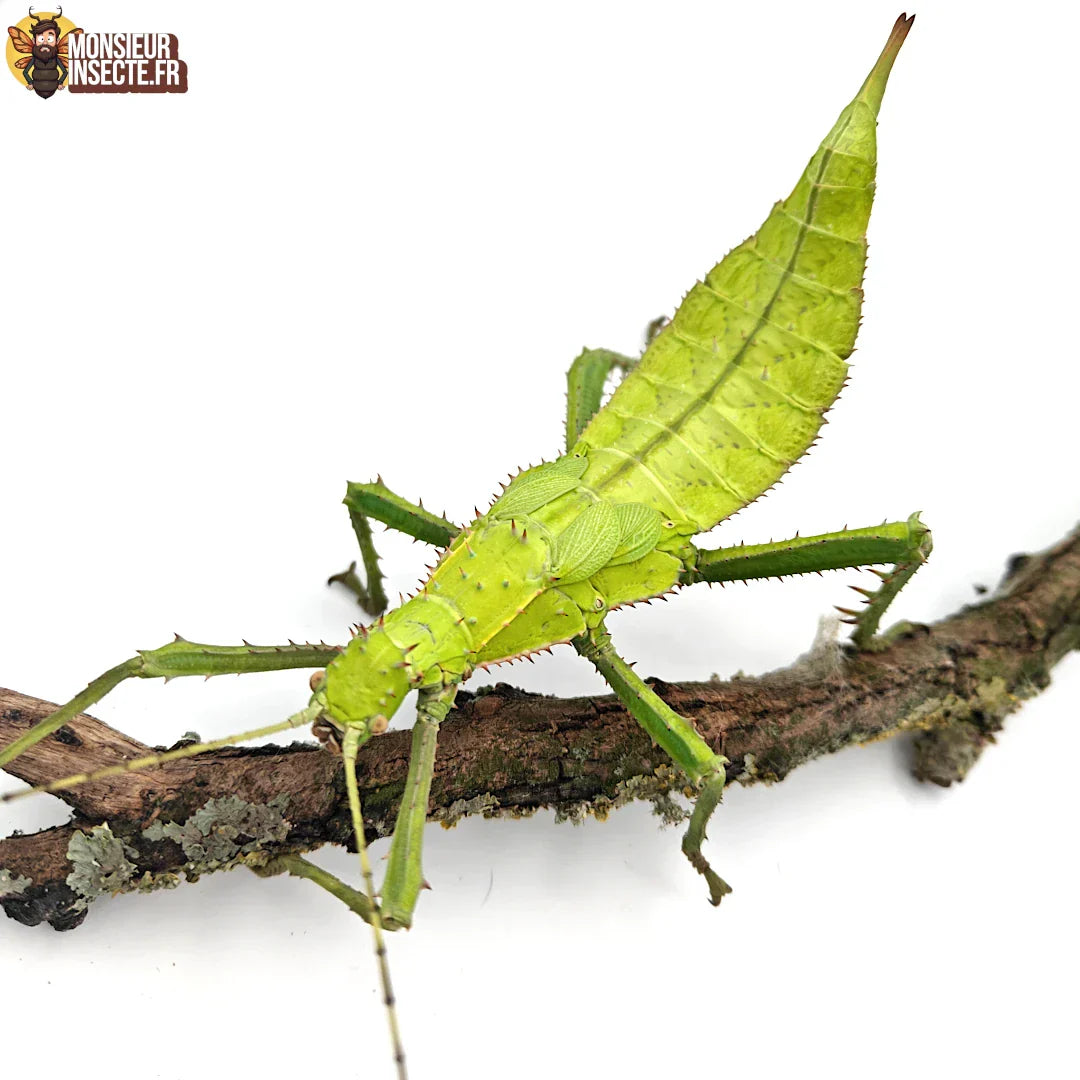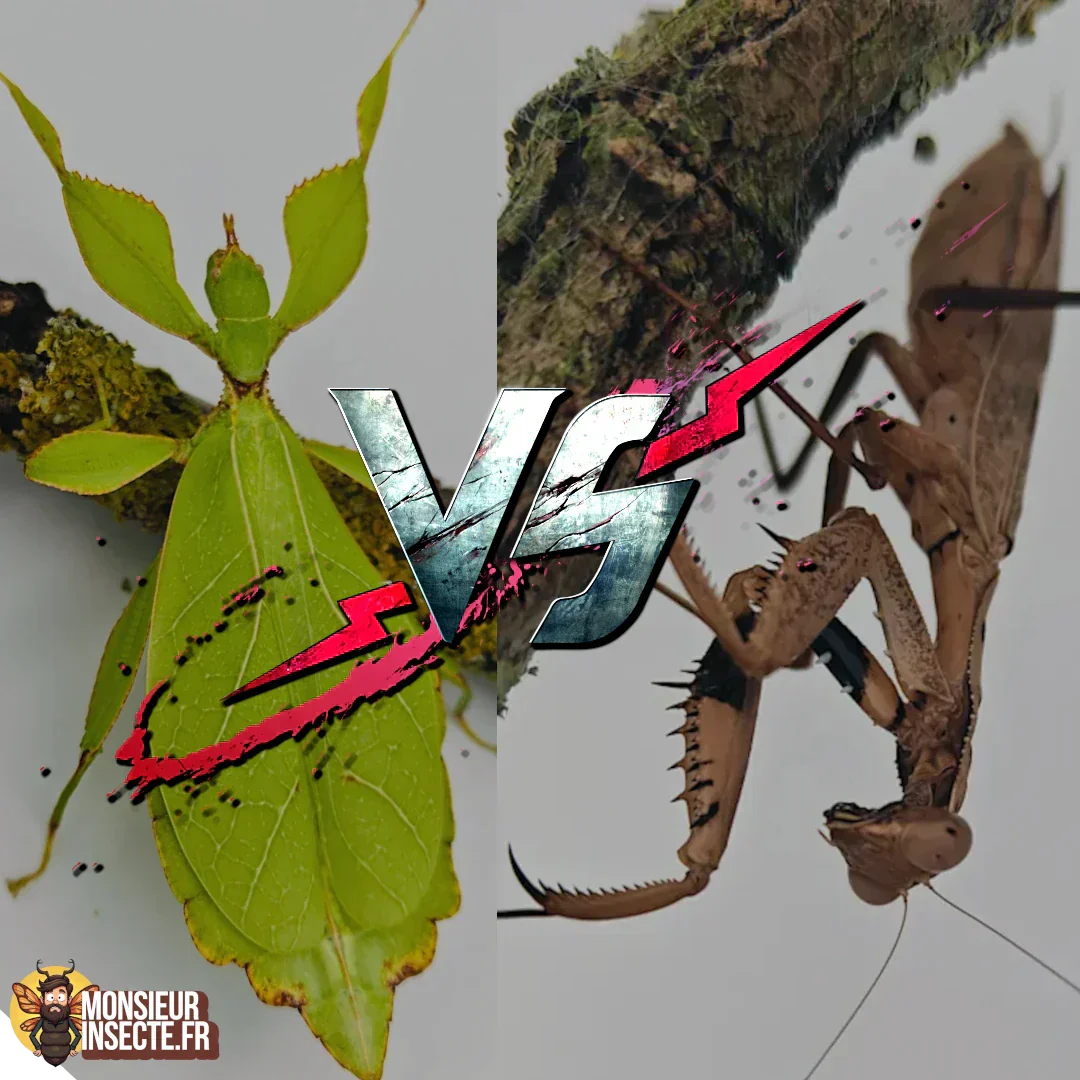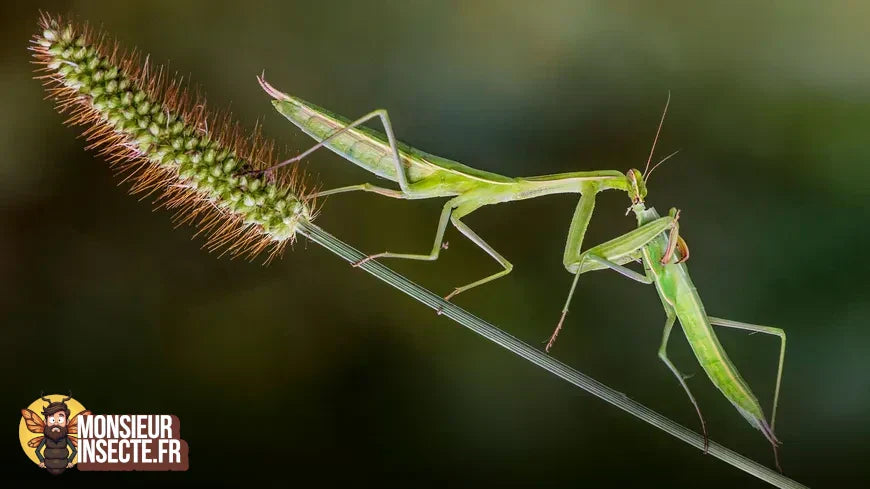Stick Insects: How to Take Care of Them?
Stick insects are fascinating and easy to raise, perfect for those passionate about entomology and biodiversity. But how do you care for them properly? Here's a complete guide to ensuring your stick insect's well-being.
1. Choose the Right Terrarium

Terrarium available here
Choosing the right terrarium is essential for your stick insect's well-being. Choose:
-
A high vivarium (at least 30 centimeters for small species, 50 centimeters for large ones).
-
Good ventilation with a fine grid to prevent these little creatures from escaping.
-
A suitable substrate (paper towels, potting soil or coconut fiber) promoting a natural habitat.
- Many stick insects, like praying mantises, like to hang upside down, so a terrarium with a mosquito net at the top will be a good idea.
- We do not recommend glass terrariums. Stick insects have difficulty attaching to them, and they have far fewer vents than plastic terrariums.
2. The Diet of the Stick Insect

Stick insects are phytophagous and feed mainly on vegetation. The most common plants are:
-
Bramble (Rubus spp.)
-
Ivy (Hedera helix)
-
Eucalyptus
-
The oak
- Privet
You will always find your stick insect's preferred diet in its breeding sheet , like here for example.
Stick insects are self-regulating in their diet. Simply provide them with fresh leaves at all times, and they'll be very happy. Foliage stays fresh for about 7 to 10 days, depending on the treatment. Cut the stems at an angle and add a very small amount of sugar to the water to increase the lifespan of the branches.
Some species prefer other types of plants. Remember to renew the leaves regularly and rinse them well to avoid harmful insecticides and pests. You can also moisten them once a day to prolong their freshness.
3. Humidity and Temperature

Each species of stick insect has specific needs, but in general:
-
A room temperature between 20 and 25°C is ideal.
-
Moderate humidity is required: spray with water 2 to 3 times a week to avoid an overly dry environment. Expect 60/80% humidity for most stick insects.
-
Indirect exposure to natural light is recommended. It's also possible to use soft LED light. Be careful, be really gentle; don't shine the spotlights of hell on these poor animals, who will die of stress 😂
4. Morphology and Manipulation

Stick insects are insects with long antennae and segmented abdomens. They have fore and hind legs adapted for clinging to their host plant.
-
Generally, if you have to handle them, grab them by the thorax and NEVER by a leg. Most stick insects practice autotomy and will readily cut off their leg to escape.
-
Avoid touching their front legs or thorax to minimize stress.
-
Generally speaking, insects don't like to be handled; if you can, just observe them. If you still want to handle one of your stick insects frequently, I recommend always handling the same one; in the long run, it will get used to it.
5. Reproduction and Life Cycle

Female sungaya inexpectata laying eggs.
Since most stick insects are parthenogenic, you can observe their reproduction. Some important points:
-
Some species reproduce by parthenogenesis, without the need for males. Others require a male (all the information can be found on your stick insect's breeding sheet).
-
Females sometimes lay their eggs on the substrate (in the soil). But not all of them! Many will simply drop them on the ground. If you have any questions about this , we're here!
-
The development cycle includes several stages: egg, larva, nymph, then imago.
-
The hatching of the larvae generally takes several months, sometimes up to a year for the longest-lived species such as Achrioptera Manga.
Conclusion
Caring for a stick insect is simple if you respect its habitat, food, and humidity requirements. These discreet and fascinating insects are perfect for beginners as well as those passionate about the world of insects and invertebrate fauna. By following these tips, your stick insect will thrive in the best conditions. And if you're lost, we're here to answer your questions, whether on social media or directly on the website!
Want to adopt a stick insect? Discover our selection of live insects and accessories in our online store!




1 comment
Laxenaire
Bonjour,
Vous dites n’importe quoi il ne faut surtout pas de terrarium en plastic ni en plexi glace il en faut un en verre mais bien aéré et les phasme ne s’accroche pas au parois mais aux végétaux
Au-Revoir
Leave a comment
This site is protected by hCaptcha and the hCaptcha Privacy Policy and Terms of Service apply.